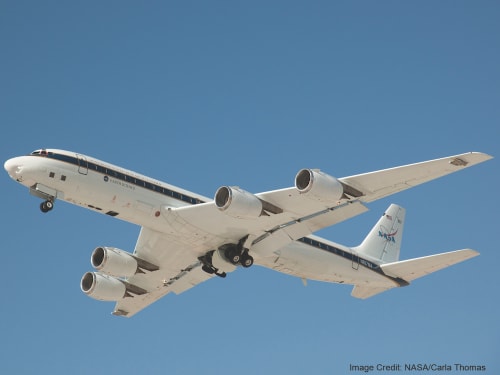2016
Aerospace & Defense
NASA's Langley Research Center developed a deployable and stowable mechanical design for filling the cavity behind the leading-edge slat (i.e., slat cove), when it is extended upon landing an aircraft. Aerodynamic flow over an unfilled cavity typically exhibits strongly unsteady behavior that is a source of aeroacoustic noise.
Researchers at NASA’s Armstrong Flight Research Center have developed a new approach for putting satellites and other payloads into space that will revolutionize the commercial launch services market. Capitalizing on the advantages achieved by releasing payloads in midair rather than launching them from the ground, this unique approach uses a towed glider to put satellites into orbit efficiently, safely,
It's a bird, it's a plane, or is that a man inside a Quad-copter Drone. First imagine what it would be like to fly. Then imagine a person wearing a quadcopter or quadcopter wearing the person. Also imagine what it would be like to have a guide with you wherever you go and who can actually listen.
There is no global, mandatory reporting requirement for shipping containers lost overboard at sea. Obviously the companies responsible would rather not mention that they regularly drop containers into the world’s oceans.
Currently the World Shipping Council estimates that 2,700 shipping containers are lost at sea each year.
A particle accelerator and containment vessel for anti-matter, specifically anti-iron.
The shape of the accelerator is that of a trefoil. An even distribution of particles along the containment path must be maintained. The total mass of the stream and its speed of traverse determine the strength and scope of the anti-Higgs field.
This technology will work on the principle of Action and Reaction.
MECHANISM:There will be two part of this engine.
The first part will move freely in a cylindrical tube but second part will be stable.
Two motors will be fixed in this engine as per the diagram.
Our Sirena Autonomous Underwater Vehicles - AUV / marine robot offer the ultimate in autonomous remote subsea survey capability. These free-swimming autonomous underwater vehicles are characterized by great maneuverability and high accuracy of stabilization. Hydrodynamic shape, accurate instruments and excellent battery capacity makes these AUV's ideal choices.
Sirena is available in several configurations and depth ratings.
The field of Flapping Wing Micro Aerial Vehicles (FWMAVs) or commonly known as Ornithopters have seen a tremendous amount of research based upon an argument that they are more efficient than the traditional stationary wing or the rotary wing flight at smaller scales. Ornithopters emulate the natural flapping wing motion of birds and insects resulting in the flight.
Page 2 of 9









